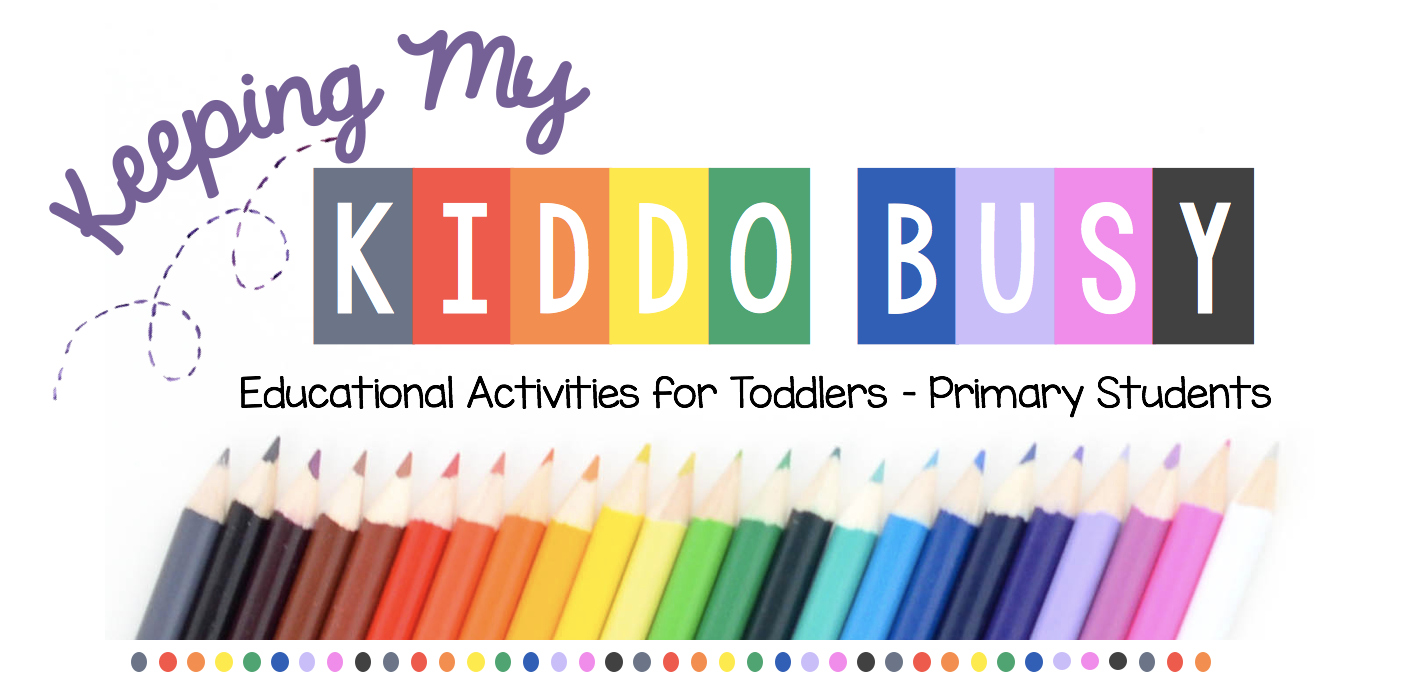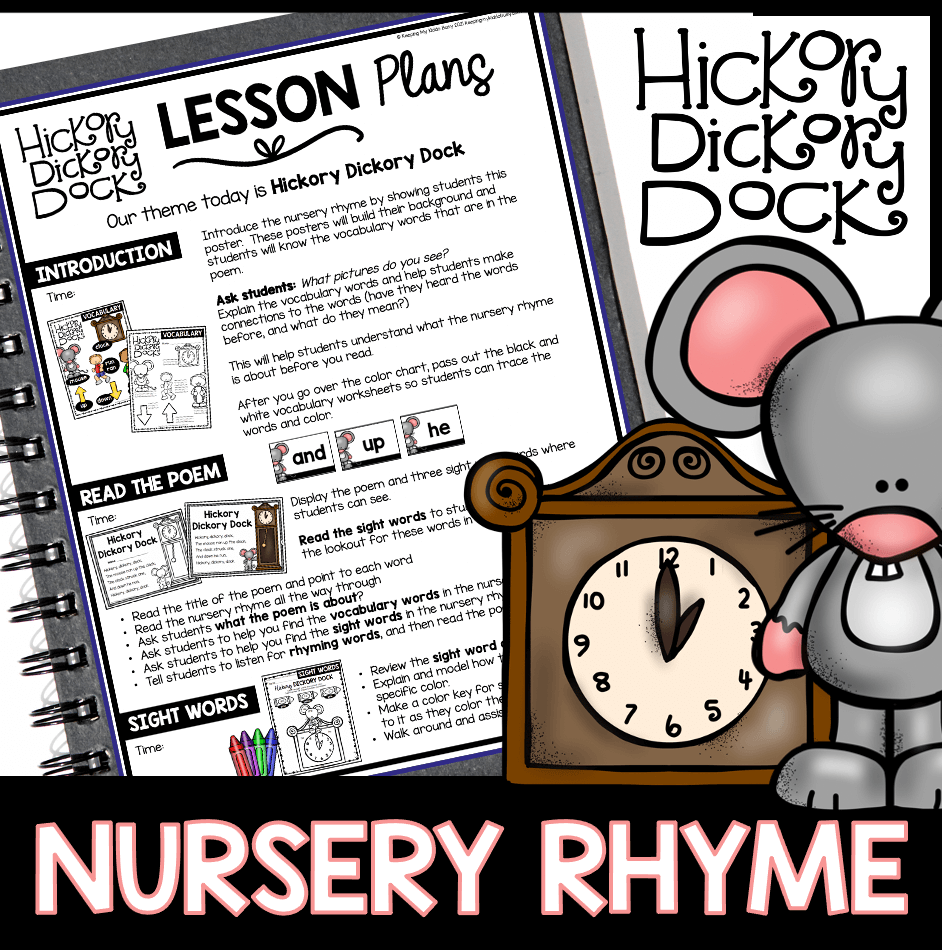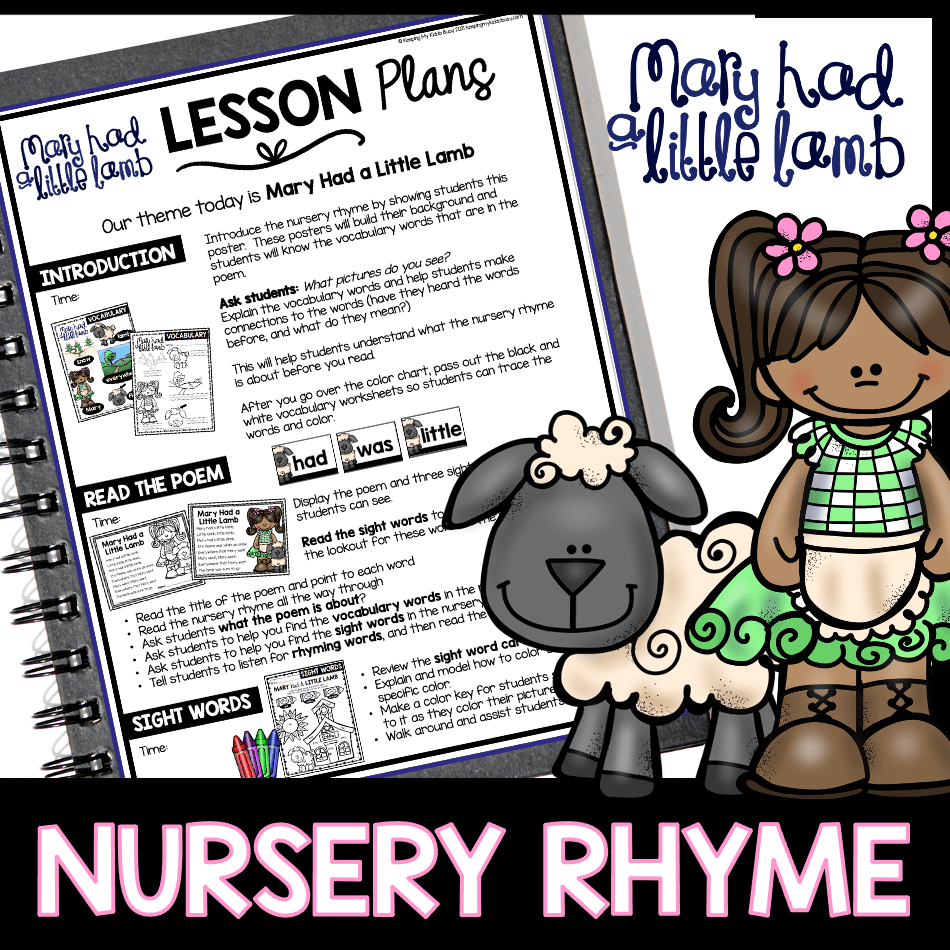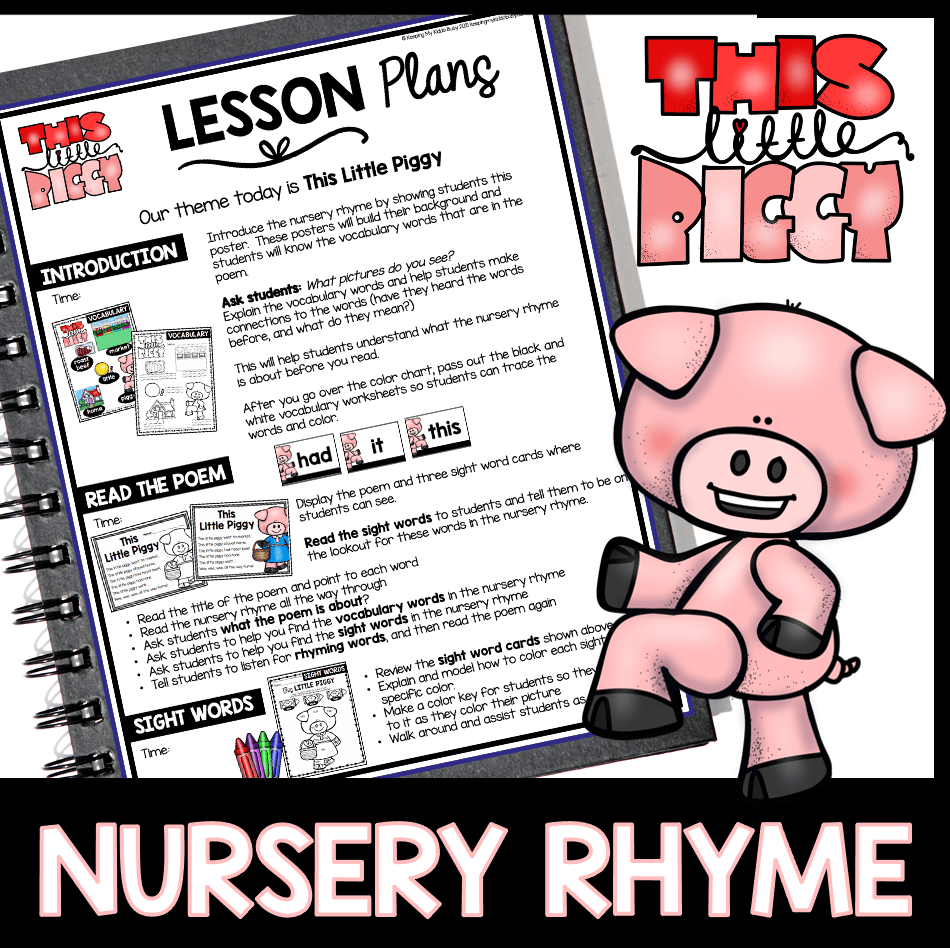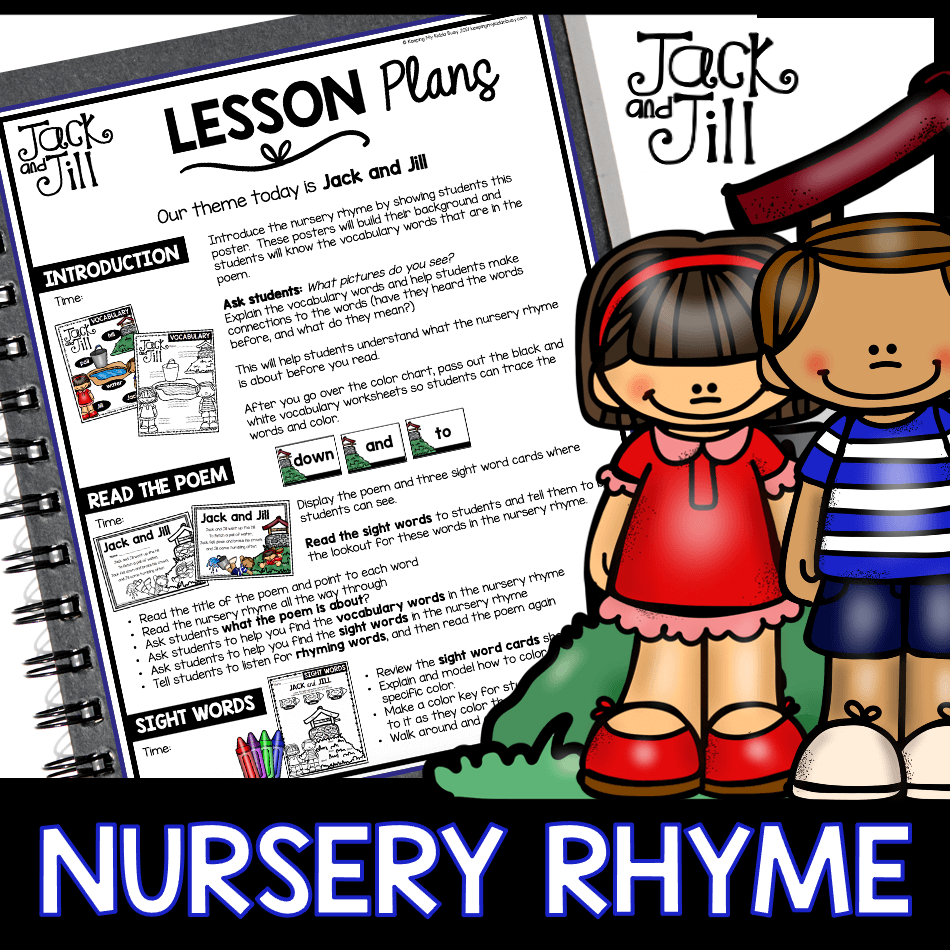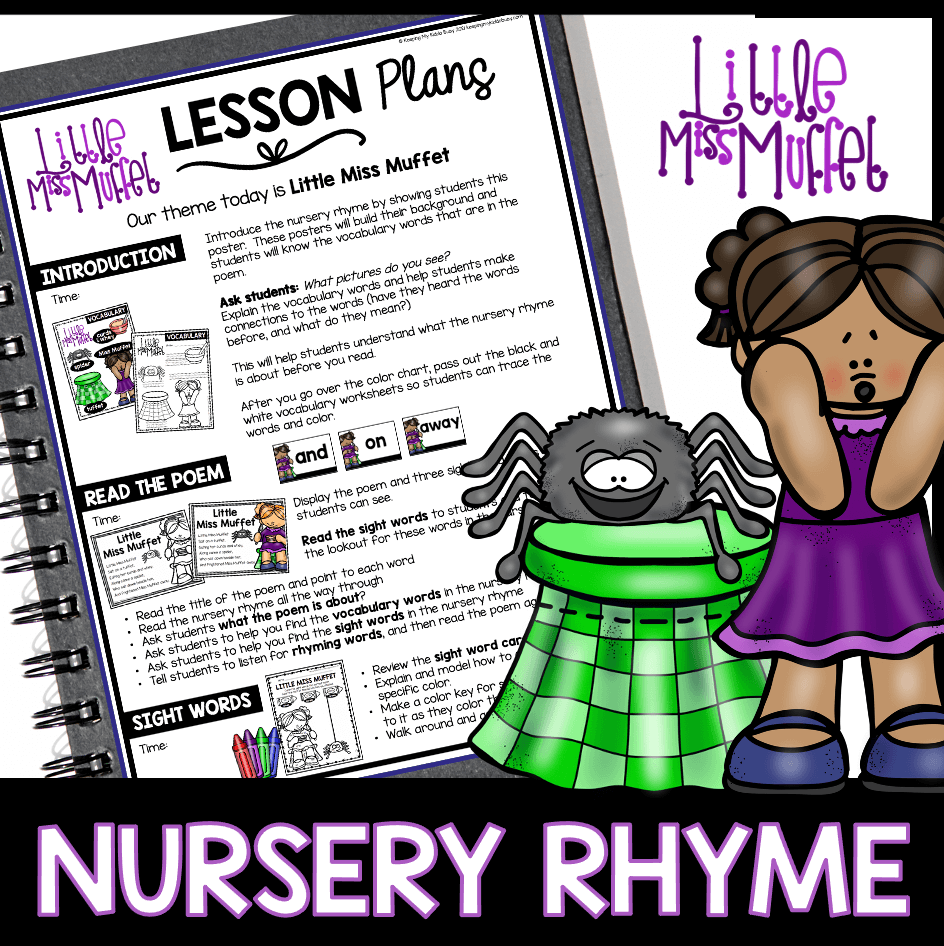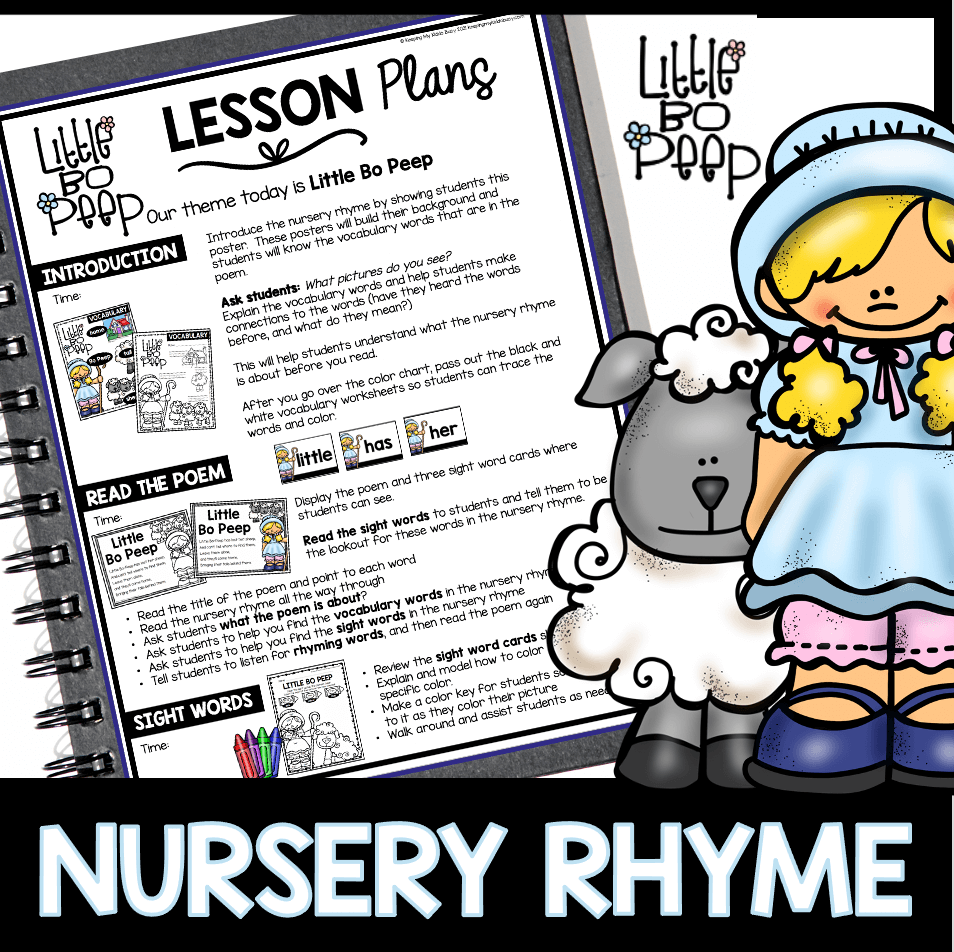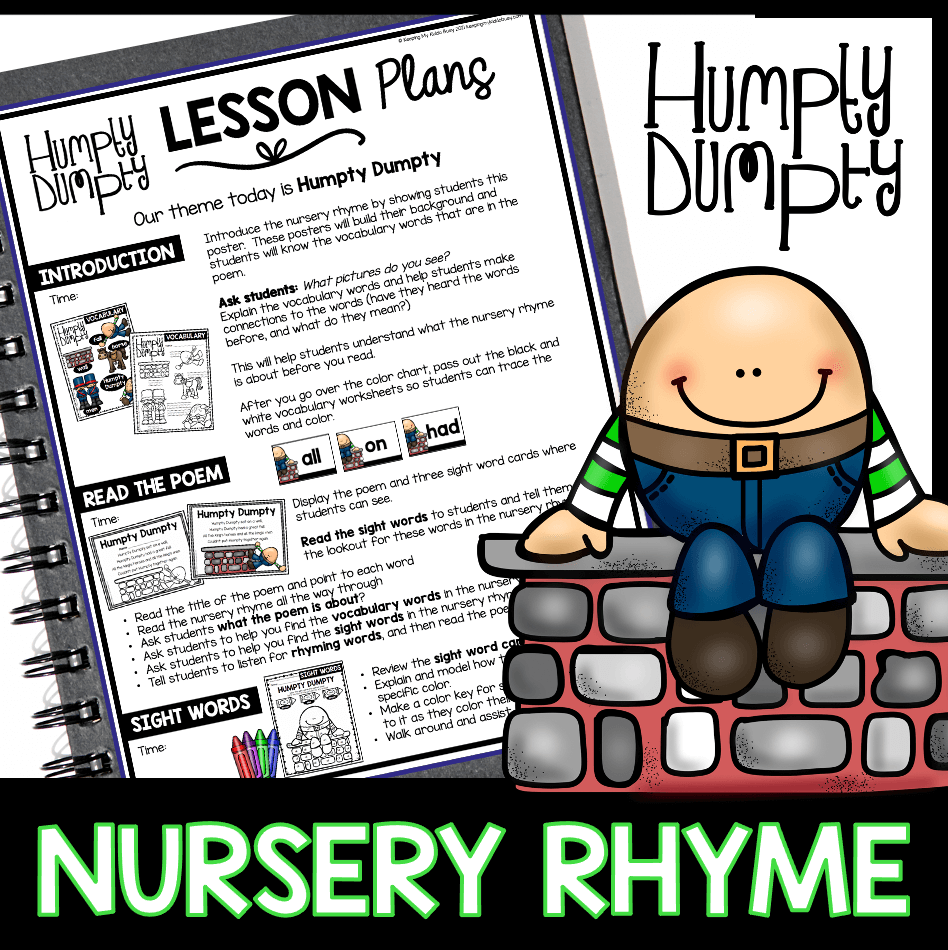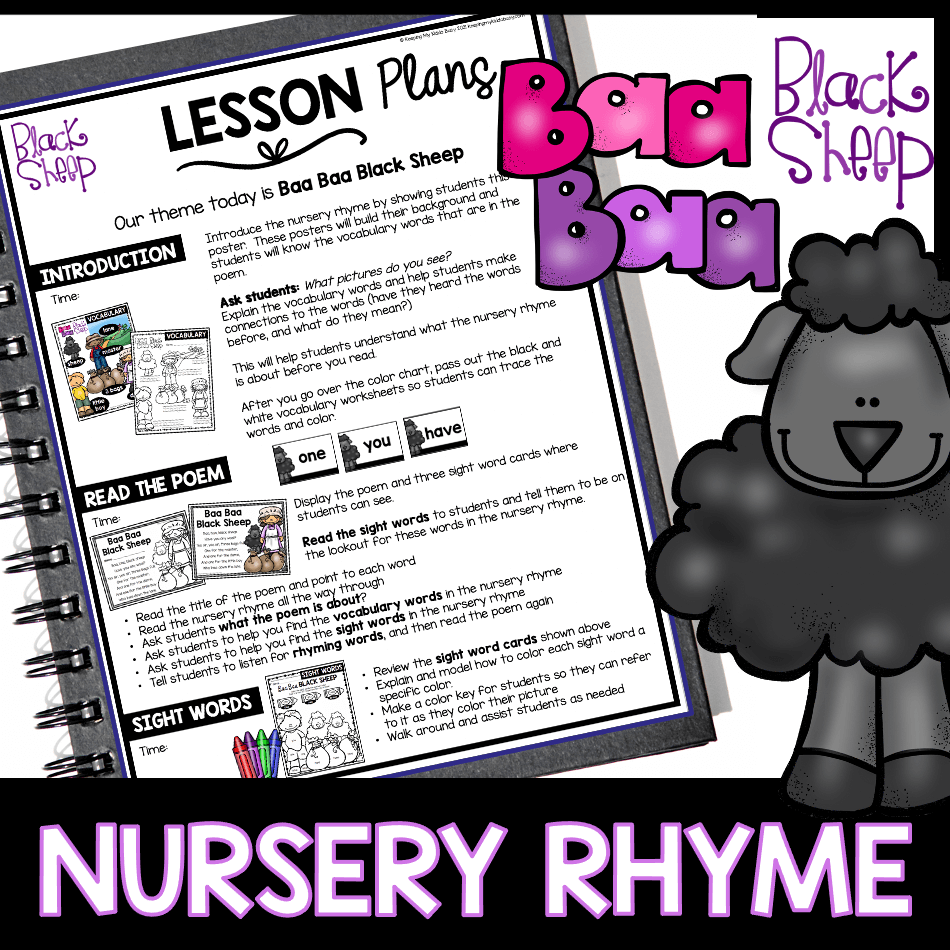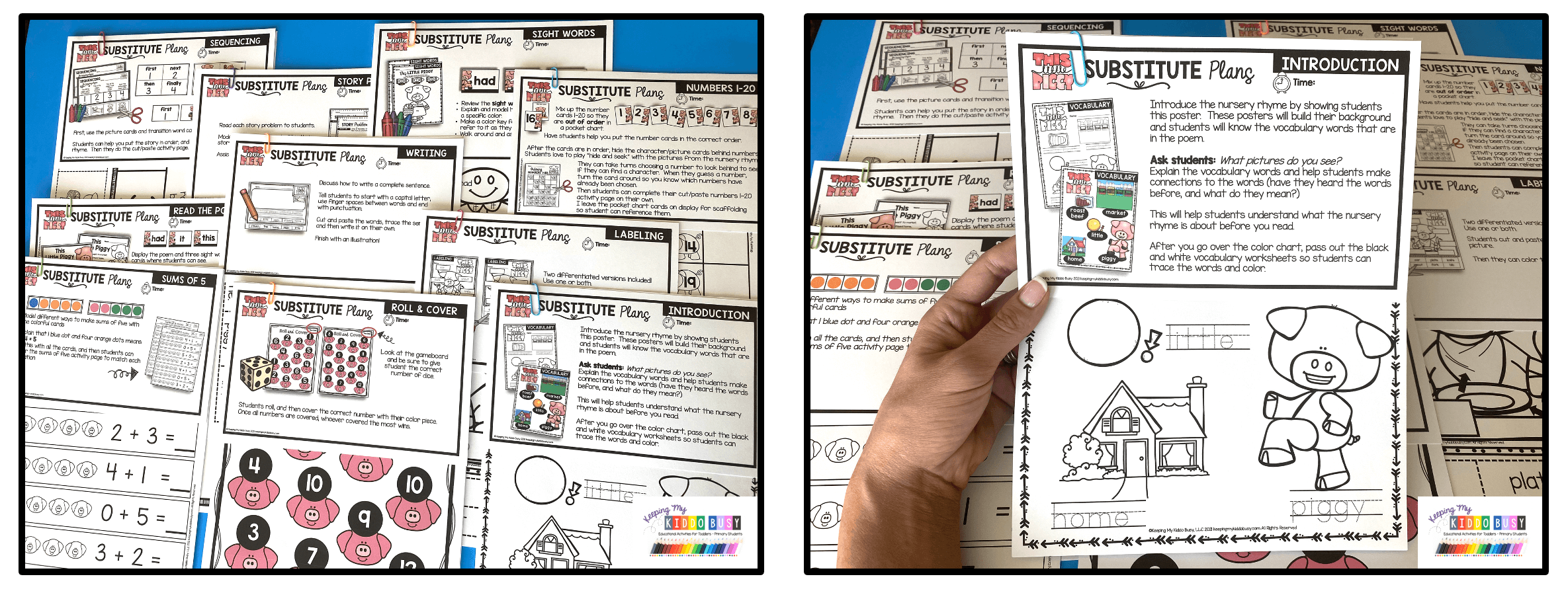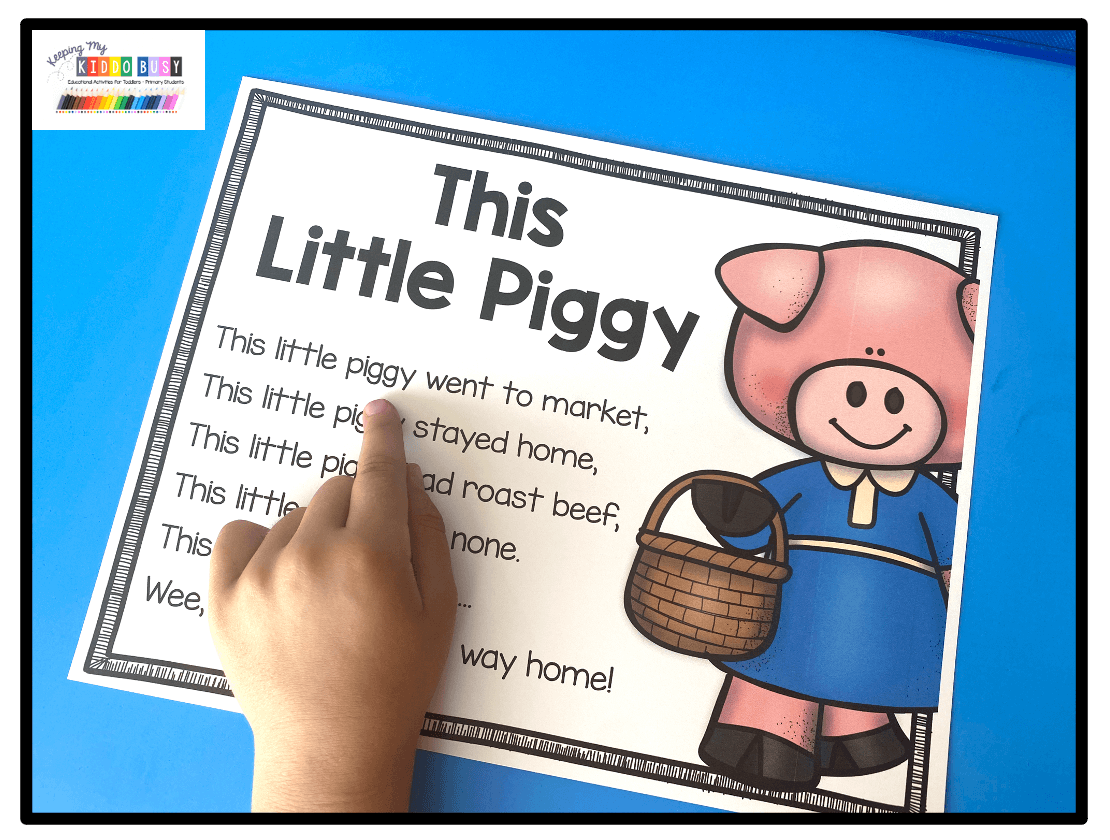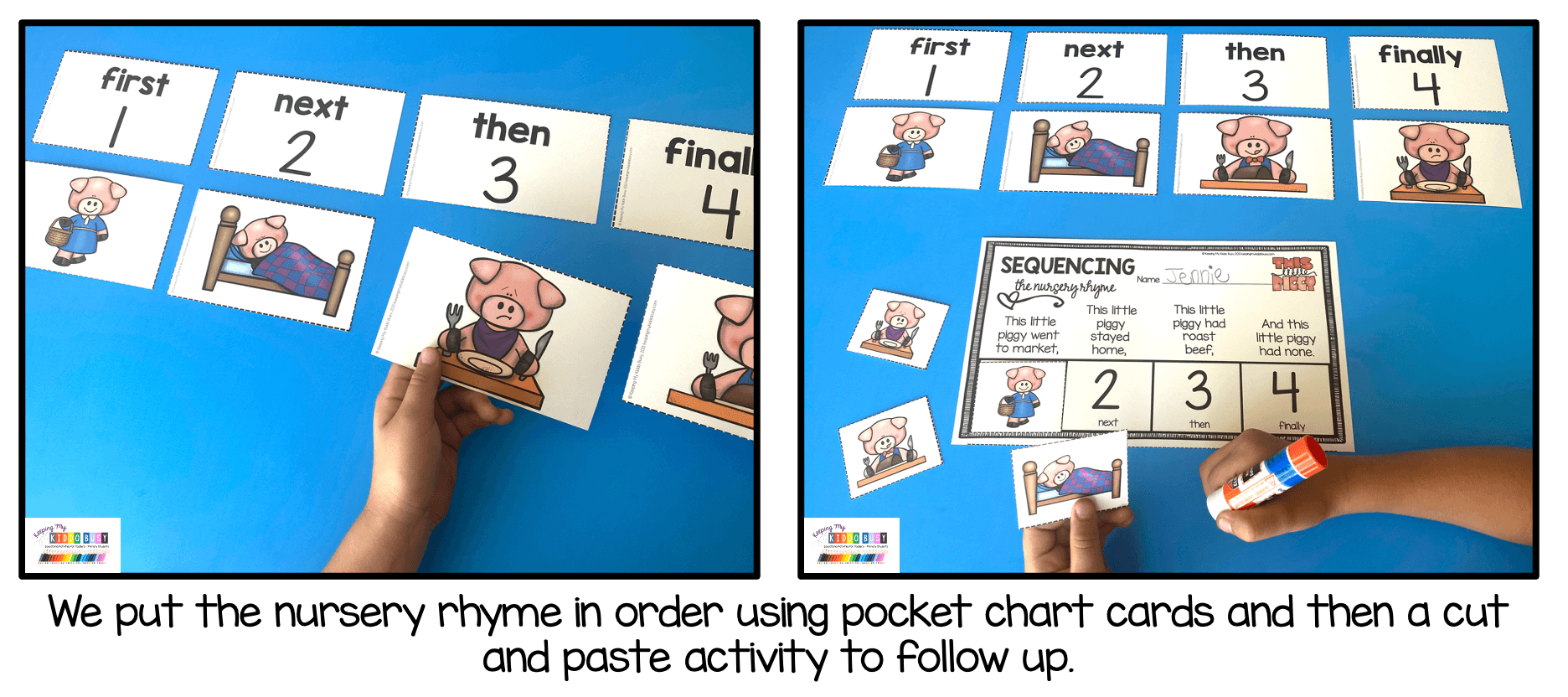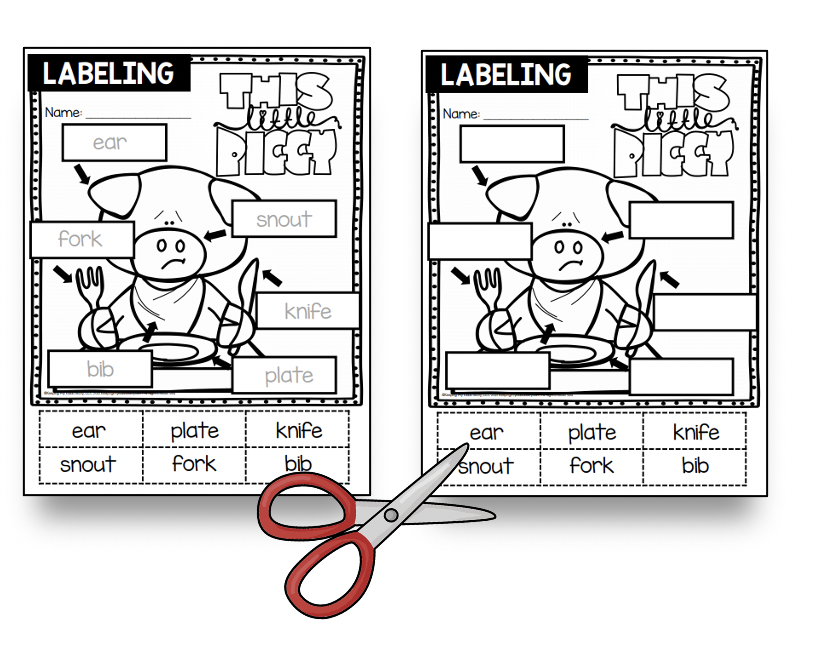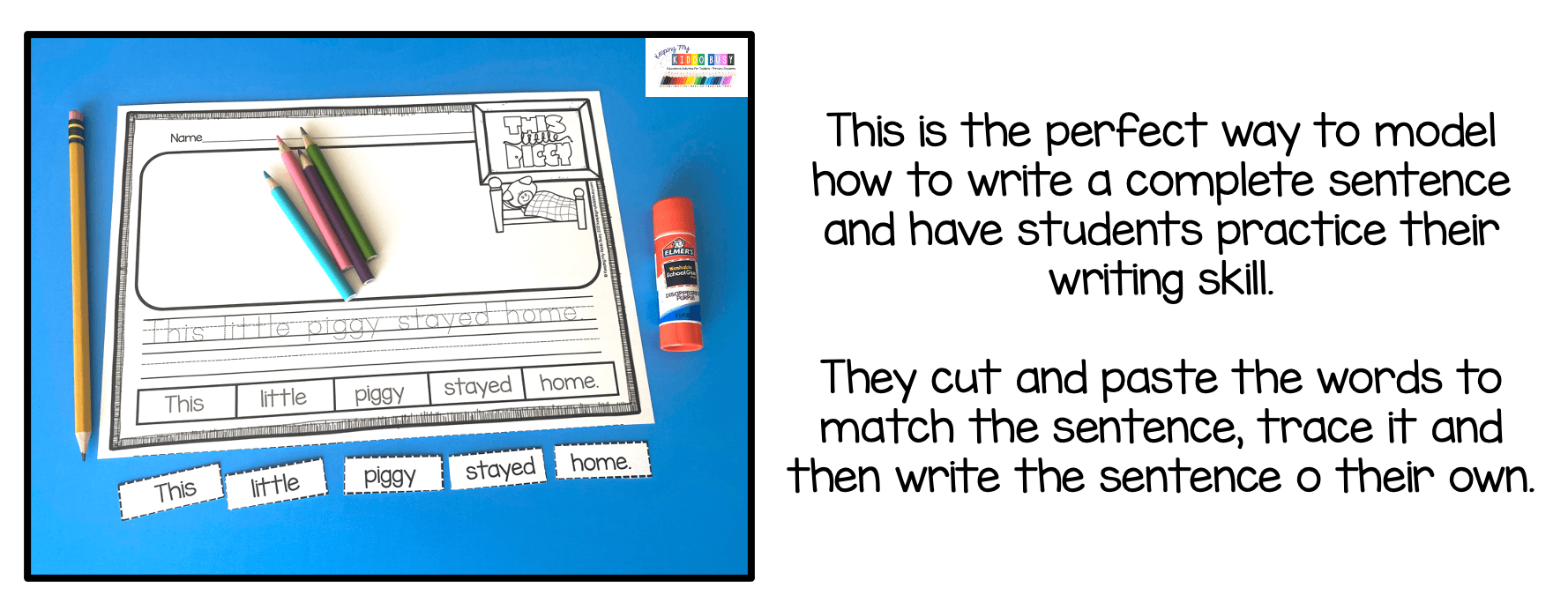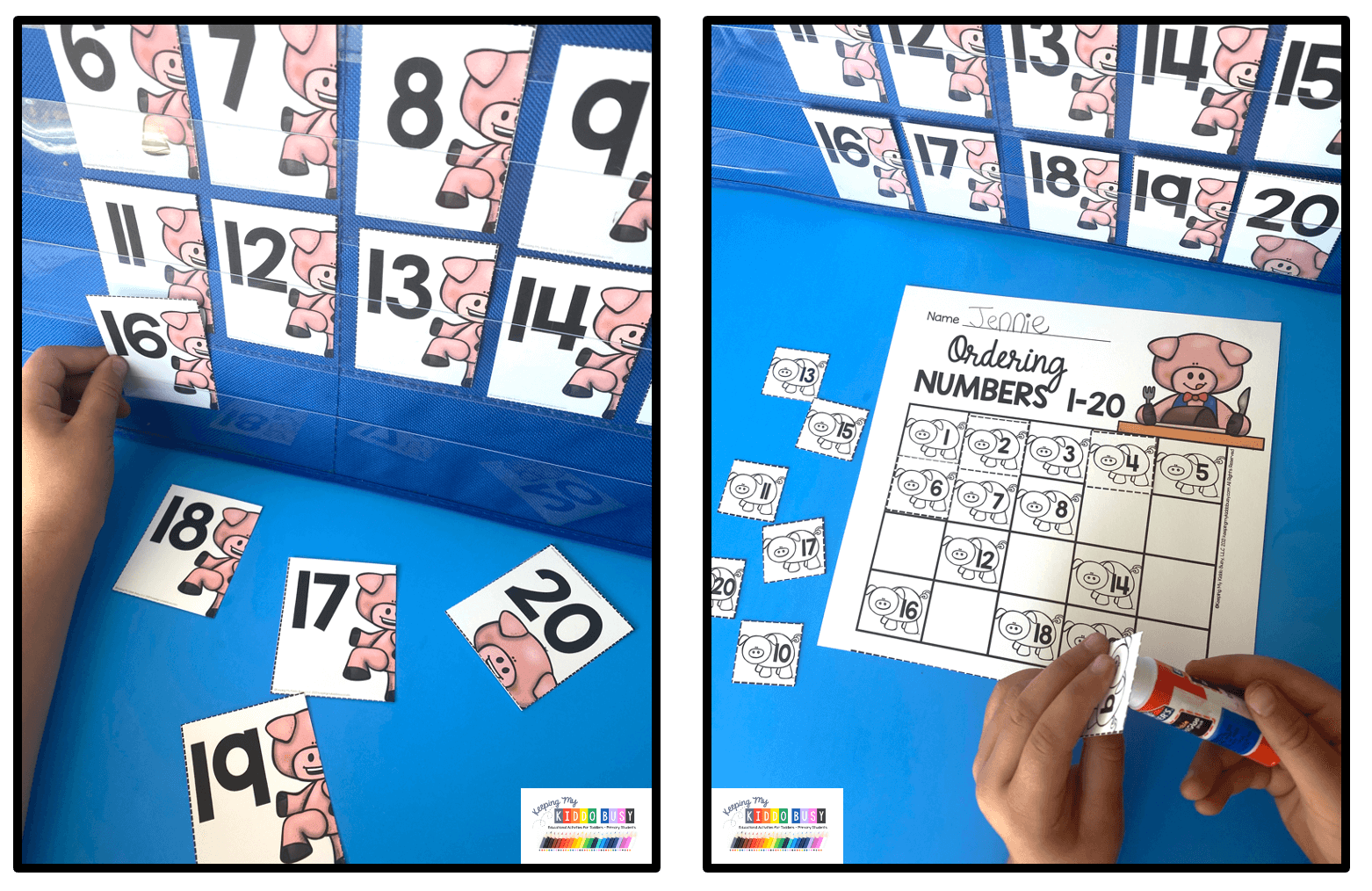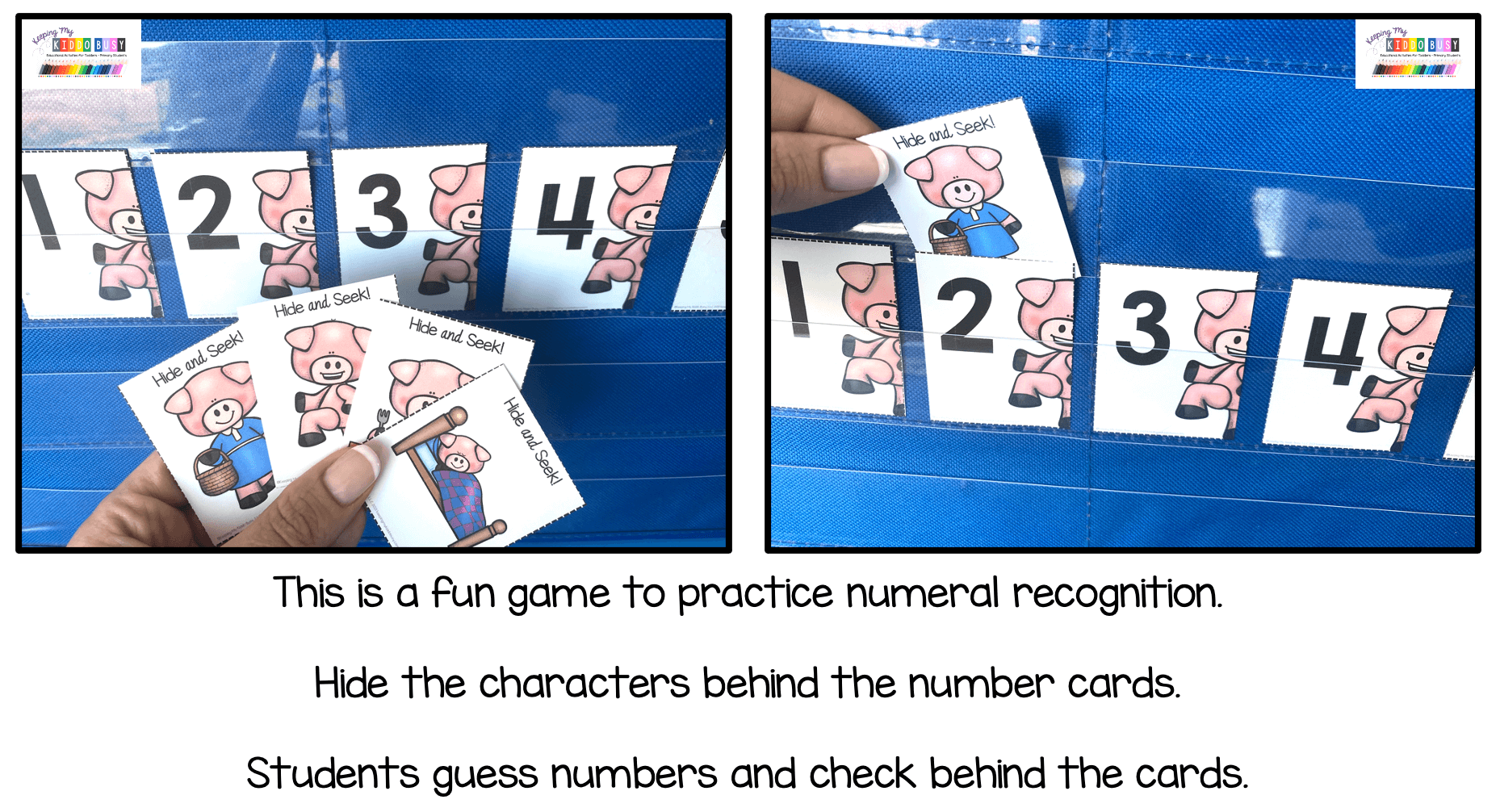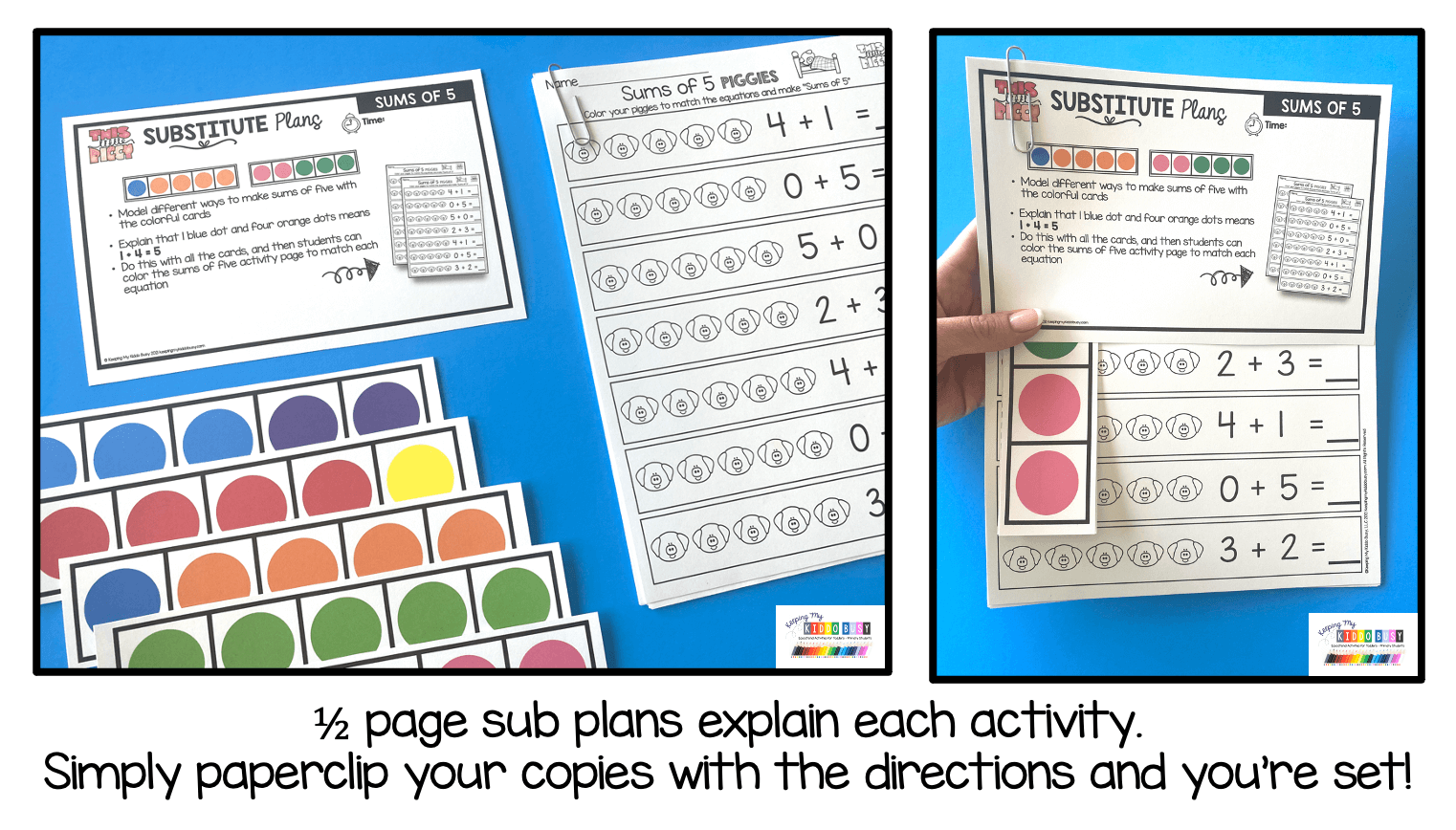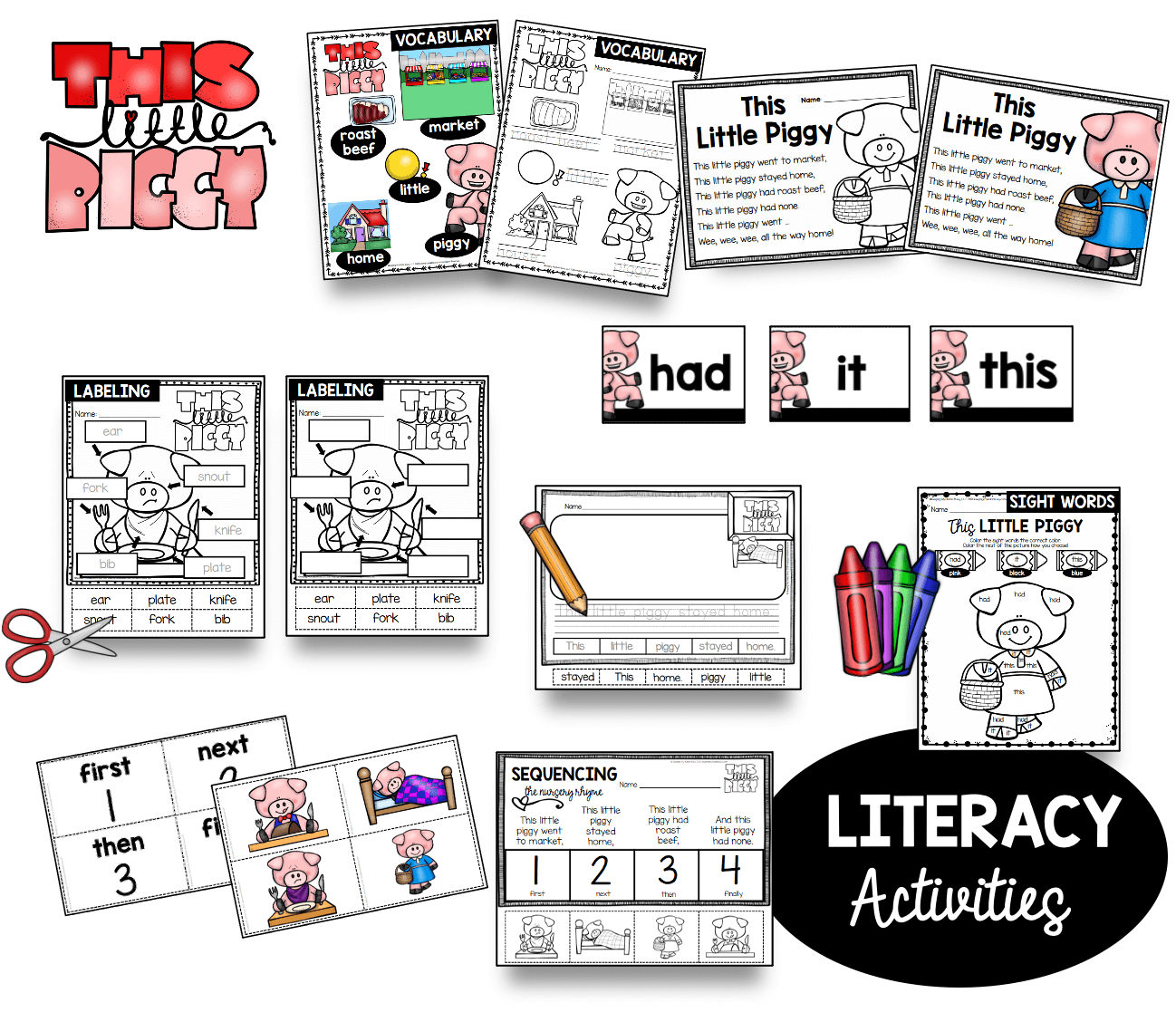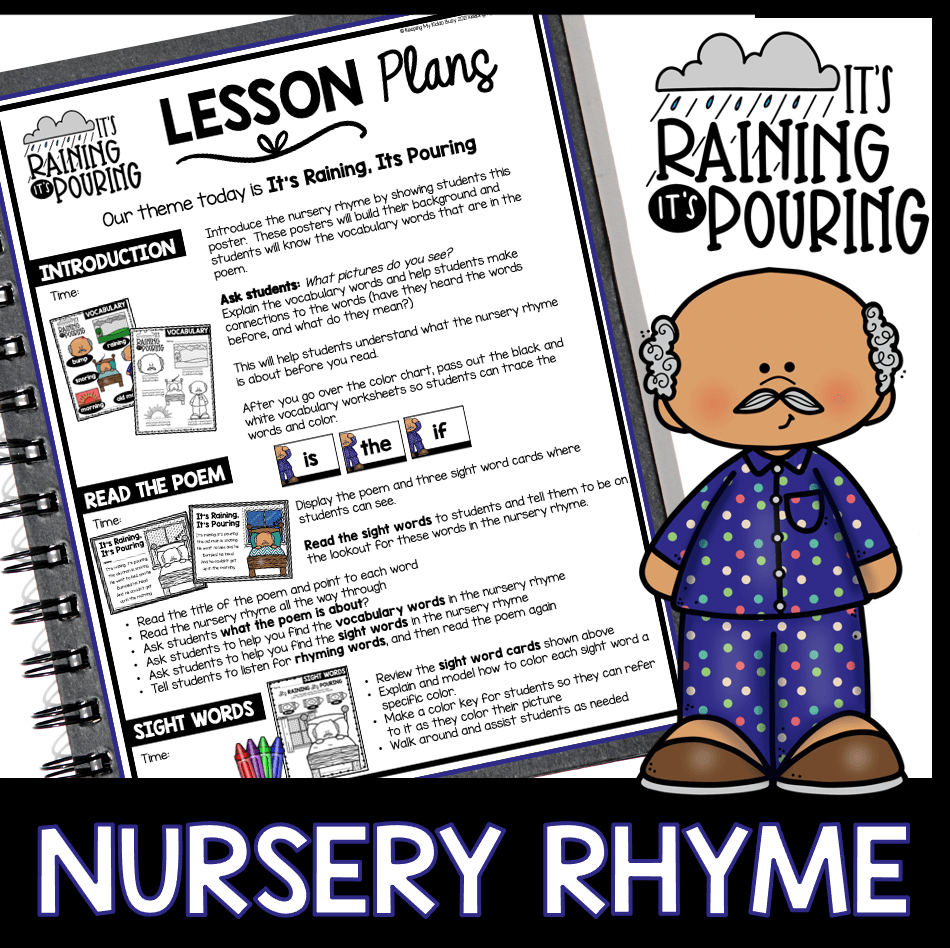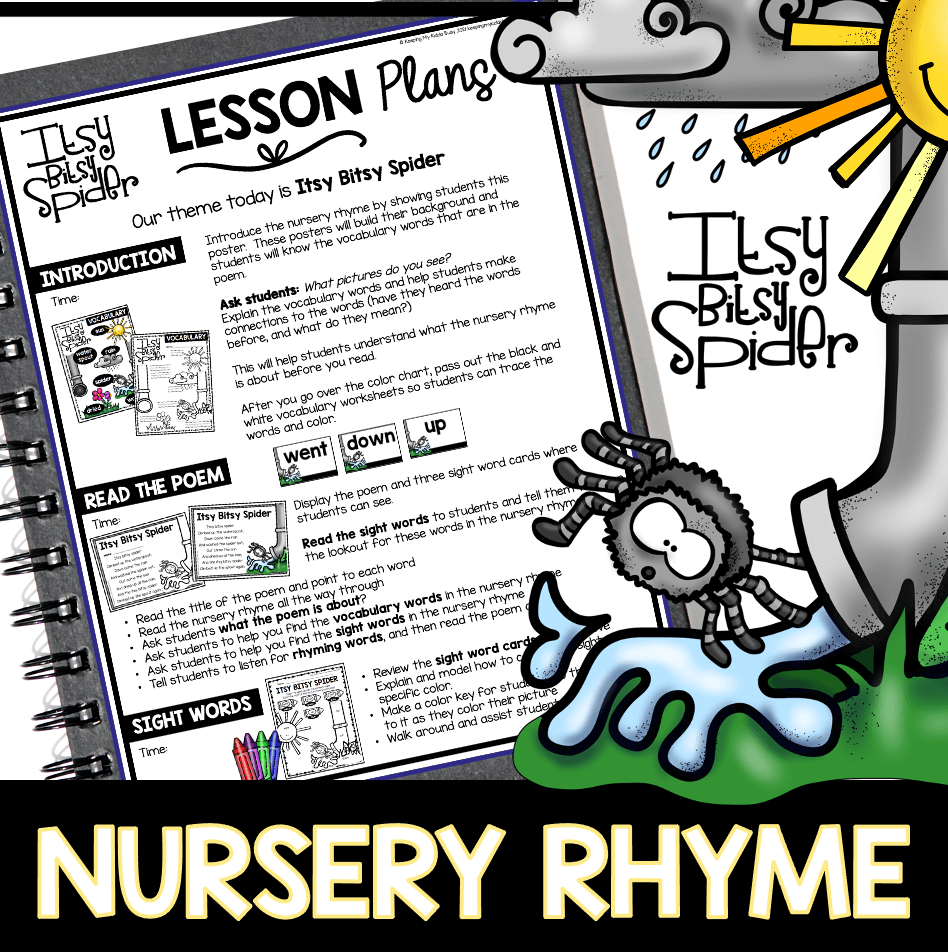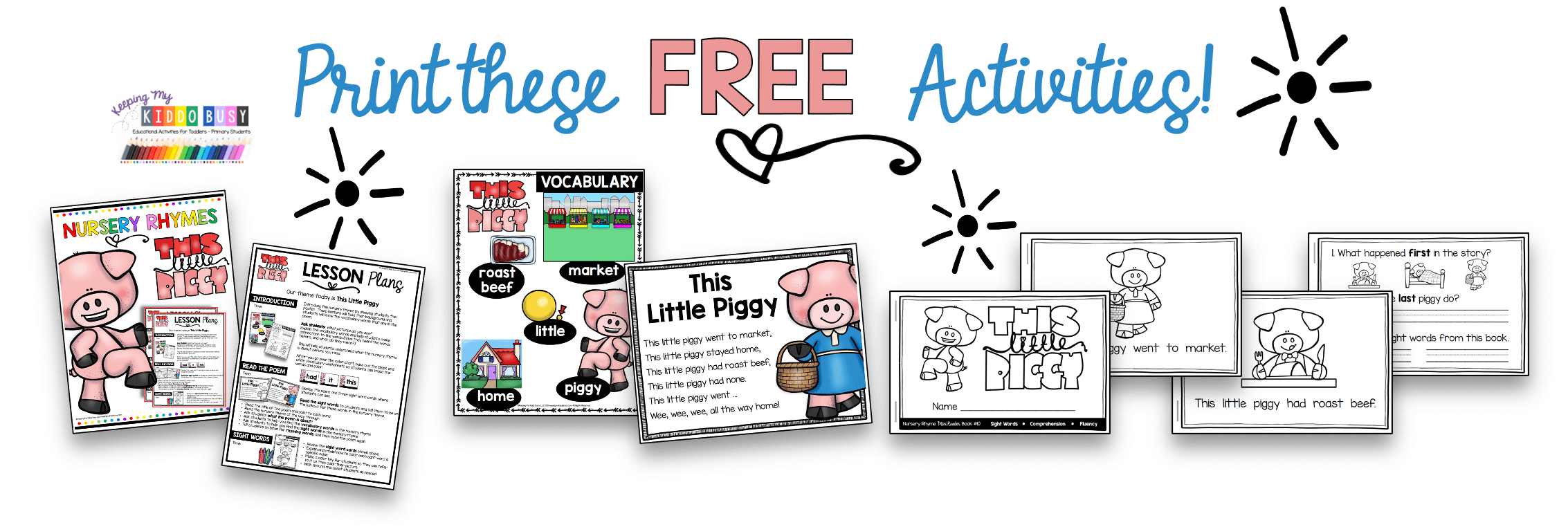Easy to read substitute plans are also included for no prep substitute baskets.
These ten nursery rhyme units are all setup the exact same.
These resources can also be used as literacy centers, during calendar time, and reading groups.
Once students know the routine of these units, it makes it so easy to learn a new nursery rhyme.
This page contains affiliate links. Read Full Disclosure
I am sharing a FREEBIE from This Little Piggy on this page.
CLICK EACH UNIT TO PREVIEW AND PURCHASE
WHAT IS INCLUDED IN EACH UNIT?
These photos are all from This Little Piggy. Since every unit is setup the same, all ten units follow this same routine.
Why are they setup the same? I chose specific kindergarten skills that we work on throughout the entire year.
Students need to practice these skills more than one time including reading fluency, comprehension, sight words, sums of five, etc.
These units are designed so you can simply print and teach! Use all of the included activities, or only the ones you wish.
If you plan on using these for substitute plans, you can print, paperclip the 1/2 page instructions and place the activities in a bin so your sub is completely setup and ready to go for the day. The photo above on the right shows THESE bins.
Paperclip the 1/2 page instructions to each activity, write the time of day you want the sub to teach it and you’re set!
I prep five substitute bins for the school year so if I can’t come in for the day, the sub can simply open a bin and be ready to go.
I use the other five nursery rhyme units in class (they are perfect for homeschooling too!)
HOW I TEACH EACH NURSERY RHYME UNIT
Just like any read aloud book or story, I always start by introducing vocabulary words and building their background first.
I want them to get excited for what we are about to read and activate their schema - what do they already know so they can make connections and help with comprehension.
They come in both color and black and white - I display the color version and students trace the words and color the pictures on their own black and white copy.
The poems also come in black and white. I always display the one we are working on and model how to touch each word as we read it (1:1 correspondence).
We look for words that are repeated a lot and the high frequency words we already know.
We love to say the nursery rhyme in regular voices, monster voices, mouse voices, etc. This is an easy way to get kids excited to read and say the poem multiple times.
Three sight word cards are included in each unit and match the color by sight word page (shown to the left.)
We read the word, spell it and read it again.
We find the words in the poem and then do the color by sight word page.
Now we read and fill out our mini books! Each student gets their own mini book and we cover so many skills.
I read the book first with students following along. After I read the book, we then read it together.
Each mini book has the same setup of activities. There is a spelling page (they go back and find the pictures/words in the story) and then comprehension questions. These are geared for kindergarten and first grade students.
You can take as long as you would like with each activity. If you’re using these as sub plans, I suggest going in the order I am showing on this blog post.
If you’re using these as a unit spread over a few days/weeks, you can use these activities in any order you choose!
Now that we have read the poem a few times and completed a mini book with comprehension questions, we are ready to retell and sequence the nursery rhyme.
I absolutely love this activity because students really know the nursery rhyme by now! It is so fun watching them put the events in order, discussing what comes next and retelling the poem.
This is the perfect opportunity to teach the words first, next, then and finally.
We do the picture cards together whole group in a pocket chart, and then students can do the cut and paste activity.
If you’re using this in a center, you can have the cards displayed in order as scaffolding.
Next, we move on to labeling the picture!Two differentiated labeling activities are included in each nursery rhyme unit.
I use the matching labels at the beginning of the year, and towards the end of the year I use the printables that students must match on their own by looking at the letters.
Students cut out the words and place them on the correct place on the picture. Then they can color the pictures. I remind students to look at the letters in each word and ask them to practice the sounds.
If they get the first couple of sounds, I then use context clues and say, “Okay, this word starts with /pl/ so what word would make sense? What is the arrow pointing to?” Using both phonics and context clues, they will say, “PLATE!”
I love watching them use multiple skills to learn how to read!
In my sub plans, I teach all the literacy activities in the morning. Writing a complete sentence is the last activity we do before lunch.
Before we complete this worksheet, I remind students what compete sentences have.
We sing, “Start with an uppercase, the rest are lowercase, use those finger spaces and end with a period!”
MATH ACTIVITIES
If you’re using these activities in your substitute basket, I prefer to teach all the literacy activities in the morning and then after lunch we focus on the math activities.
Here are the activities included in each nursery rhyme unit. They are all skills we work on throughout the year, and you can choose to use the ones that work for your children.
In kindergarten, we work on recognizing, writing, and ordering numbers 1-20.
If you’re using this at the beginning of the school year, you can just use number cards 1-10 … use the activities that work for you!
Scaffolding tip: put five cards in each row out of order.
Have students help you put each row in order at a time and then recount to check.
For example: in the first row, place numbers 1-5 out of order. Once students put them in order, practice the critical skill of counting on, “okay what comes after five? Five, six, seven… let’s put the next row in order.
There are so many games you can play with these number pocket chart cards.
We love hide and seek, print two sets of the number cards and play memory, go fish, etc. These are perfect to move to a center once you have taught them whole group. We work on ordering numbers 1-20 all year.
Every nursery rhyme unit comes with themed cards, so once children know some of the games it is an easy way to switch it up and still work on solidifying the same skills.
Roll and Cover never gets old!
I love that once I have taught this game, students love to play all year with the different themes and nursery rhymes.
It gives me a great check for understanding to see who needs additional help with numeral recognition and counting.
It makes it so easy for substitutes when students already know the games and expectations.
Fluently adding within five is a kindergarten standard.
I want my children to know automatically without thinking that 2+3 =5 and 4+1=5, etc.
The colorful pocket chart cards are a great visual for students and we go over the ways to make five.
Then students color the pictures to match the equation.
Every unit also comes with an addition and subtraction story problem page.
Students show their work in many ways including drawing a picture, completing/tracing a sentence and filling out the equation.
NURSERY RHYMES MADE EASY!
You will absolutely love the setup of these adorable units. Everything is standards based, engaging and planned for you.
If you’re using the sub plans, just print and paperclip!
Each nursery rhyme unit is setup the exact same way, so once students have completed the activities in one unit they know the expectations.
This makes it so easy to focus on the content of the lessons instead of teaching the directions.
These units are perfect for classroom lessons, homeschool, virtual teaching and substitute baskets!
Click the product preview on TPT to see each nursery rhyme.
PREVIEW AND PURCHASE NURSERY RHYME UNITS
Not sure yet if these nursery rhyme activities are a good fit for your children?
Try these free activities from our This Little Piggy unit!
